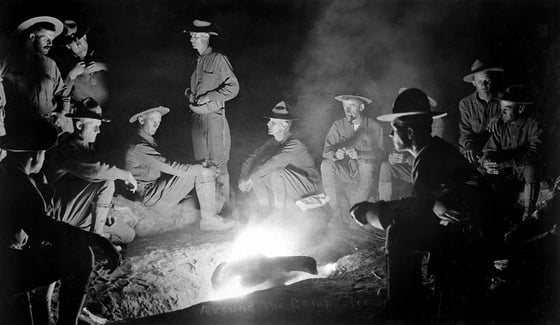


Visual Storytelling and why you should consider Podcasts




According to Marketing Tech Blog, in 2015-2016, Content Marketing will; “go supernova” with visual storytelling i.e. videos, audio and (perhaps oddly) podcasts.
Podcasts, vines, instructional videos… People are in swathes of arguments about what kind of written content is the correct kind of written content: is ‘snackable content’ like a Tweet better than mid-length content, which is anything around 500 words, or should anything worth writing be at least 2,000 words?
Meanwhile ‘visual storytelling’ with audio and video are slowly taking over the internet, for example, the ever increasing popularity of Vines are allowing consumers to turn their hands at editing.
Building visual storytelling profiles, like a strong, episodic podcast channel, Vine account or YouTube channel can have massive benefits to your business or product.
Short videos are also a brilliant way of interacting with an audience that is increasingly built to consume. The more visually compelling or aurally stimulating the message, the more concisely the message comes across.
One thing that no one expected and that we’re focussing on today is the sudden upshot in the popularity of podcasts. There have been a myriad of articles and blogs written this year that look into why this is and how they’re beneficial for just about anyone.
The main reason across the board for podcast popularity is that they allow people to subscribe to channels that interest them and to consume as many episodes in a row as they choose.
Listening to a stream of podcast episodes is similar to the way people binge-consume episodes of TV shows on services like Netflix.
Kevin Spacey has famously given his support for this, saying that services like Netflix have the potential to save TV and we should let people binge. His point is that giving people what they want, when they want it means that they are more likely to pay for things, rather than steal them. (Full article and video here at International Business Times).
People are now doing the same with the likes of the podcast ‘Serial’ by Sarah Koenig on Audible, ‘How Did This Get Made’ on SoundCloud and with instructional videos on YouTube like the ‘Slow Mo guys’.
https://youtu.be/np68FhljCb8
Another reason why people en masse seem to love podcasts is that unlike watching videos and y’know plain old reading, listening to podcasts allows them to multitask.
Podcasts are a great alternative to music, and don’t distract people from hands-on task performance.
So, taking both of these into consideration, now we need to look at what the benefits for your company will gain by creating your own podcast.
One great thing about podcasts is that they’re practically risk-free because you don’t have to worry about being too niche. With regards to podcasts, this isn’t a problem and in fact can be even better for gaining followers.
If you have a gardening business for example and start making podcasts, with each episode covering a specific genus of plant or flower and how to cultivate it - this is exactly the type of information the green-thumbs of the world are looking for… You’re quids in.
Starting a podcast can also expand your audience because you’re branching into new territory; by posting podcasts on iTunes or Soundcloud etc, you no longer have to rely solely on your social media channels and your website.
What’s even better is that you can use your social media networks to publicise your podcast and vice versa - it’s quite the marketing organism.
A big draw for most people is that producing podcasts is cheap, unlike traditional radio, you don’t need any fancy recording equipment. You can record decent quality audio on your phone and/or tablet, similarly editing software is cheap to download and use on these devices too.
Perhaps the best thing about podcasts though, is that you’re in complete control of the content that goes into each episode.
If you want to strike up a conversation about something in the industry, do a podcast on it and invite your target audience/listeners to comment and join the debate with you.
Perhaps you’ve got a particular service or product that you want to push, invite someone (maybe even one of your consumers) to a podcast where you talk about the features of your new service or product and extol its virtues against other products.
A excellent example of a successful podcast channel is the monthly podcast from Sentric Music, a music publisher based in the North West. Each month they talk about new music, new bands on their service, they play new music and give advice to unsigned artists everywhere.
Once you’ve done a couple of these, you’ll start to realise that much like writing blogs or posting on social media, you can gather a lot of non-traditional marketing research through podcasts.
This is easy to track because you can see how many people listen to/download each of your episodes, and by asking for your consumers to leave feedback, you’re getting straight into their mindset.
People love giving their opinions on things and by opening up a channel where you talk directly to your audience on a podcast, you open up a whole new world of marketing possibilities.
The times are changing, outbound is outdated and in some cases, can be potentially dangerous for your brand financially and in a reputational sense. Big fines are being handed out to serial data offenders. With inbound you can avoid this and get the best from your leads so read our blog “How to create Inbound Strategy Masterclass” for more information.”







